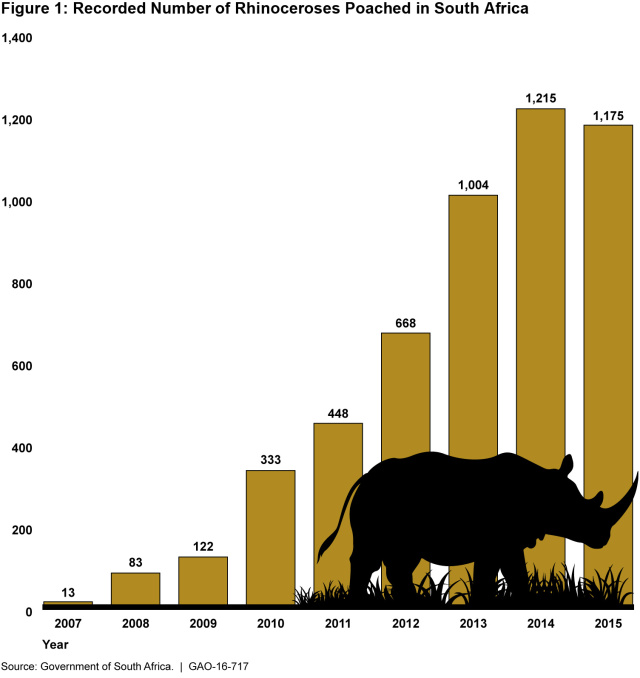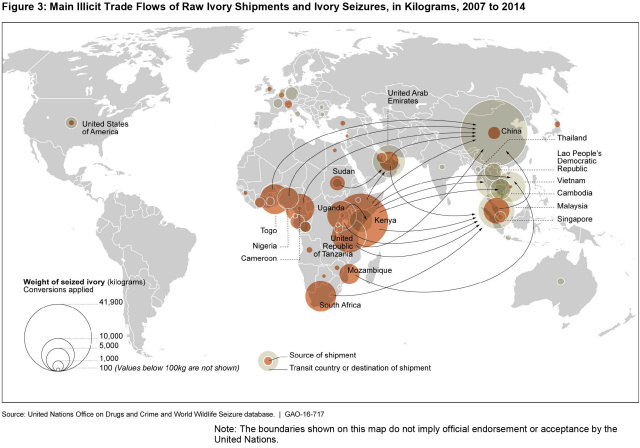Fighting to Protect Wildlife
 (Excerpted from GAO-16-17)
(Excerpted from GAO-16-17)
Who’s involved?
Though terrorists are often blamed for wildlife trafficking, they are not the main culprits. Transnational organized criminals are a driving force behind the trafficking of animals and their parts. U.S. officials indicated that there are organized criminal groups that have the scale and sophistication to conduct illicit trade internationally—these are the main actors responsible for moving large volumes of wildlife products across the world.
 (Excerpted from GAO-16-17)
(Excerpted from GAO-16-17)
- The State Department provides public outreach and support of international organizations. It also helps build the capacity of law enforcement by providing training and equipment to park rangers.
- The Department of Justice prosecutes the criminals involved. For example, Operation Crash, a rhino horn and ivory-smuggling investigation, resulted in charges being brought against 40 individuals and businesses.
- USAID works with communities to help protect and conserve their wildlife. In 2015, USAID committed to starting more than 35 new projects (in 15 countries) to combat wildlife trafficking.
- The Fish and Wildlife Service provides law enforcement assistance and supports conservation efforts that address wildlife trafficking. For instance, it placed two law enforcement attachés in Africa in 2015 to help build capacity in several partner nations.
- Questions on the content of this post? Contact Kim Gianopoulos at GianopoulosK@gao.gov.
- Comments on GAO’s WatchBlog? Contact blog@gao.gov.

GAO's mission is to provide Congress with fact-based, nonpartisan information that can help improve federal government performance and ensure accountability for the benefit of the American people. GAO launched its WatchBlog in January, 2014, as part of its continuing effort to reach its audiences—Congress and the American people—where they are currently looking for information.
The blog format allows GAO to provide a little more context about its work than it can offer on its other social media platforms. Posts will tie GAO work to current events and the news; show how GAO’s work is affecting agencies or legislation; highlight reports, testimonies, and issue areas where GAO does work; and provide information about GAO itself, among other things.
Please send any feedback on GAO's WatchBlog to blog@gao.gov.
